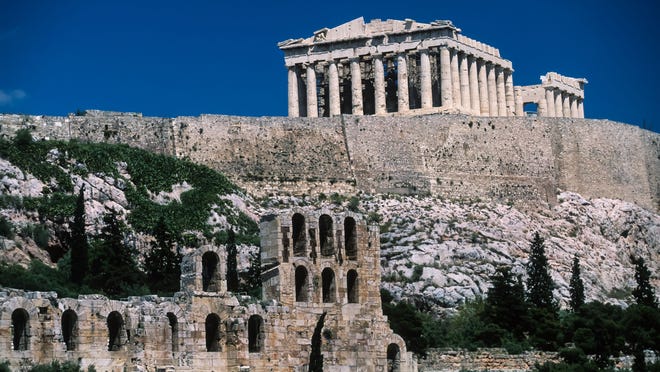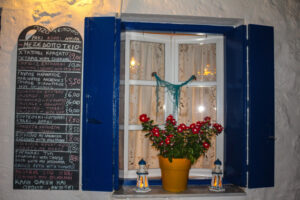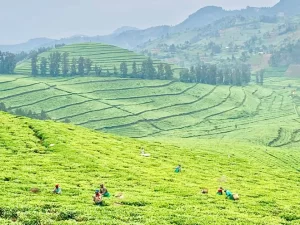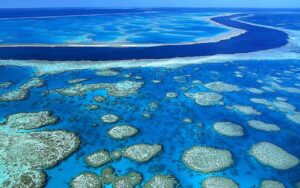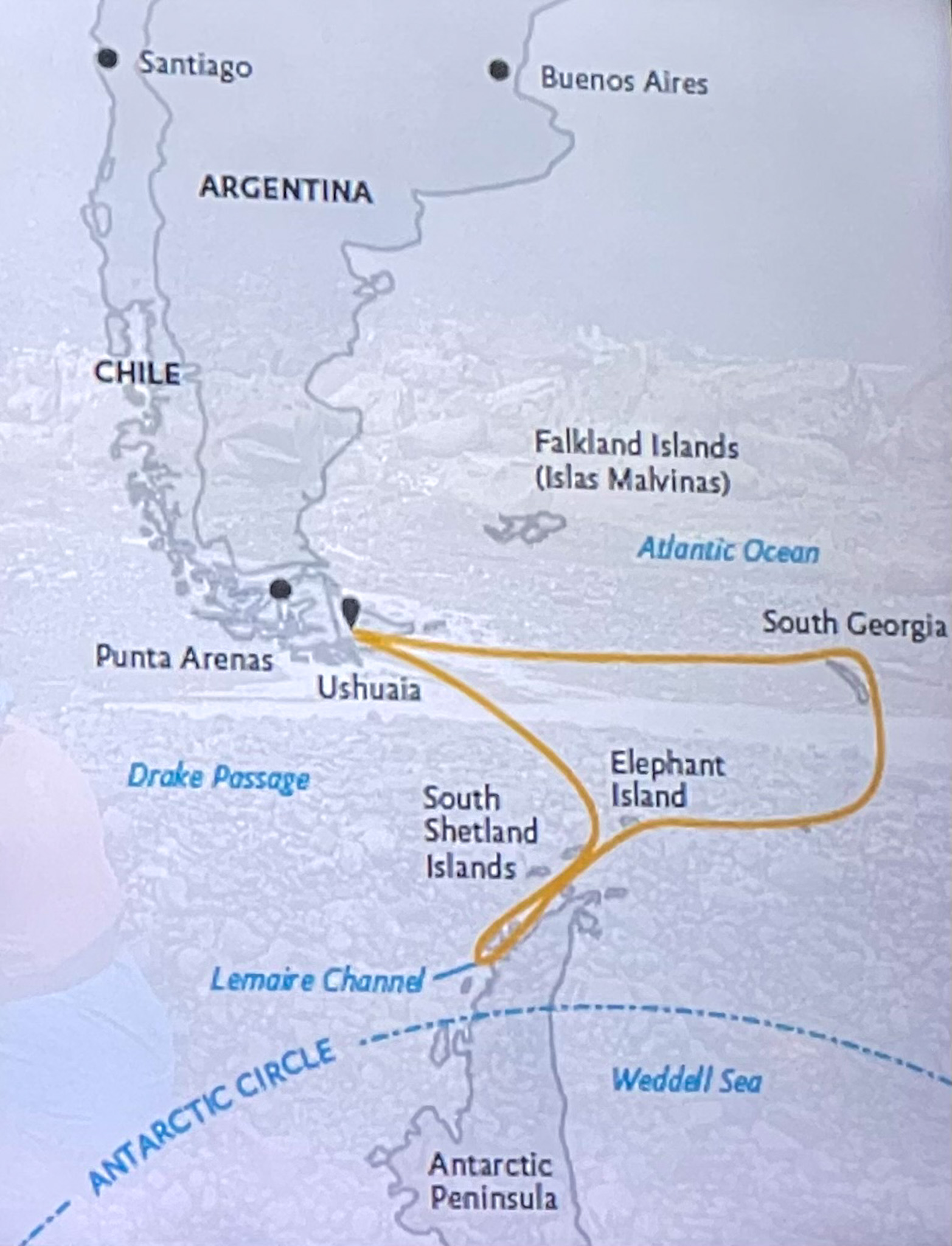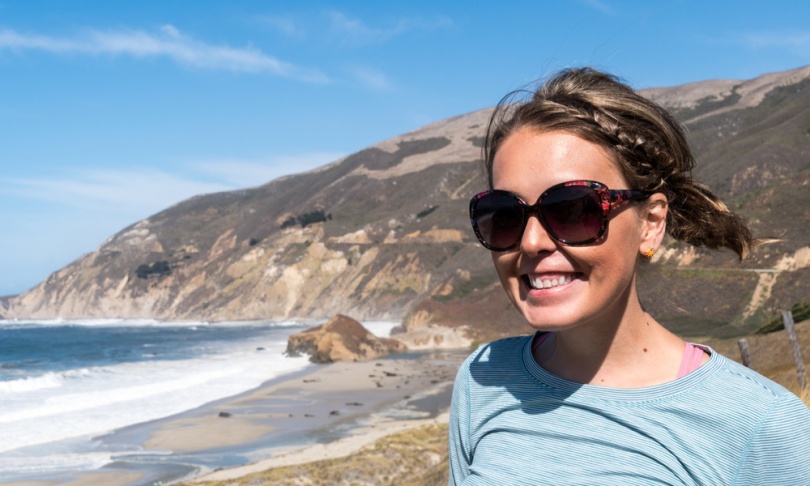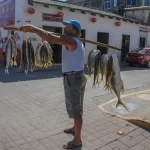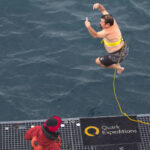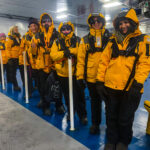Greece has somewhere between 2,000 and 6,000 islands and islets scattered through the Aegean and Ionian Seas, of which a little over 200 are inhabited. Many visitors come to the islands with an ingrained image: Whitewashed houses and churches with vivid blue accents, crisp burnt orange sunsets, a labyrinth of narrow streets where a slant of sunlight peaks through the alabaster town square. That really is what favorites like Santorini and Mykonos look like, which is why they’re so popular and crowded.
But so too do many lesser-known gems. These five islands are perfect for travelers seeking just the right blend of historical sights, unhurried adventure and a dash of delicacies, along with a sprinkling of bouzouki music and Greek dancing. Here, local life is not overrun by large crowds of holiday makers on week-long package deals.
Amorgos
It’s an adventurous eight-hour overnight ferry to arrive at the Amorgos ports of Aegiali or Katapola, but well worth it. This peaceful island is located in the southeast corner of the Cyclades, and has managed to elude most island hoppers.
Located at a viewing distance from Naxos, Santorini and Ios, Amorgos captivates visitors with its natural beauty, slow-paced life, quaint villages and traditional architecture. It is filled with fabulous beaches, inspiring filmmaker Luc Besson to shoot scenes from the movie The Big Blue on the beach of Agia Anna, below the 1000-year-old Byzantine monastery of Hozoviotissa.
A walk in Chora and holdover villages of Amorgos is a step back in time. The main port of Katapola is filled with churches dating back to the time of early Christianity. The island’s trail network is well maintained for hiking enthusiasts, who can try short distances or spend long days exploring its diverse paths, abandoned villages and mines and hidden beaches.
The stairway to heaven ascent to the summit is 2,624 feet, with picture-perfect panoramic views. On a clear day, you’ll get vivid views of neighboring Naxos.
Places to stay: The two main settlements, the ports of Aegiali and Katapola, house most guests to the quiet island. A five-star resort and spa is available for higher-end tourists, high on the hill adjacent to Aegiali town. The island capital of Chora is charming, and offers a splendid local lifestyle.
Places to eat: Some of the tastiest fare in the Aegean is created in local chefs’ kitchens. This definitely holds true on Amorgos. Restaurants can be found in both tourist settlements of Aegiali and Katapola. Amorgian island favorites include kalogiros (aubergine with veal, feta and tomatoes) and exohiko (lamb and vegetables in a pastry). Seafood is plentiful and prepared from the catch of the day.
Don’t miss: The pride of Amorgos and the most famous sight on the island is the impressive 11th-century monastery of Panagia Hozoviotissa, constructed on the slope of a rocky cliff. The monastery was created as an ode to the Virgin Mary, who is said to be the protector of the island. The ascent is well worth it, with a view of the sparkling Aegean below. Hikers should get up early and stay out late as the sunrise and sunsets on the island provide a kaleidoscope of colors. Walk up to the Aegialis Hotel and Spa for sweeping panoramic views of burnt orange sunsets. Visit the Archaeological Museum, which was the home of 16th-century island noblemen.
Must-see Greek ruins and ancient buildings
Kefalonia
The Ionian Island of Kefalonia was put on the map by the 1994 bestselling novel Captain Corelli’s Mandolin, by Louis De Bernieres, which was later made into a film starring Nicolas Cage and Penelope Cruz. The movie showcased the island’s sheer mountain landscapes and sparkling waters. Kefalonia is the largest of the Ionian islands, and the fifth largest in Greece. Despite the bustle of summer vacationers on Lassi, Karteleos and on the long, golden beach of Skala, Kefalonia is filled with secluded beaches, steep terrain ideal perfect for exploring on foot, and miles of shoreline you might have all to yourself. A third of the island’s 45,000 inhabitants live in or near Argostoli town. Most visitors to the island arrive by daily ferries from the Peloponnese to the port of Poros.
Myrtos Beach on Kefalonia is world-class. Backed by steep limestone rock walls, it’s a mesmerizing, shimmering portrait of white pebbly rocks leading to shades of sapphire, cobalt, teal, turquoise and just about every other blue that exists.
Where to stay: The charming capital of Argostoli and the second-largest city of Lixouri offer the most hotels and inns. The unhurried seaside fishing village of Fiscardo is also a favorite place to stay. For beachcombers coming for the sparkling white, red, brown and black sands, there are accommodations in Skala, Lassi, Lourdas, Trapezakii, Katelios, Sami and Agia Efimia.
Where to eat: Argostoli offers Greek and international cuisine. You will also find waterfront eateries in the coastal towns. In Argostoli and in nearby Lixouri you can find local dishes, including the famous Kefalonian meat pies made with traditional phyllo dough pastry sheets. Fiscardo offers fresh seafood and risotto dishes with picturesque views of impressive fish boats. Fish restaurants are abundant throughout the island. Try the local white wine Rombola, a specialty of the island.
Don’t miss: Visit the ruined Castle of Agios Georgios for elevated island views. Charming Assos is a magical village in an isthmus complete with its own Venetian fortress dating back to 1595. Just south of Assos lies spellbinding Myrtos Beach. At the Cave Lake of Melissani, you enter through an underground path and step into a boat to tour the cave. Archaeological excavations have found artifacts from the 4th century B.C. Continue on to the stunning limestone stalactites and stalagmite formations of Drogarati Cave. Visit the impressive church of Saint Gerasimos. Mount Ainos with its wild prancing horses dates back to Alexander the Great. Near Poros, hike up 1,500 feet to the monastery of the Virgin Mary for some of the island’s most jaw-dropping views.
Kimolos
On sleepy Kimolos, visitors will find Greek island life at its unrushed finest. Almost connected to big brother Milos Island by a 15-minute ferry ride, Kimolos remains under the radar. This is an island where locals are on a first-name basis, and if you stay long enough, the locals will begin to know your name as well. Kimolos is filled with hidden fishing villages, and beaches and swimming areas you might have entirely to yourself. The beaches Rema and Karas create the illusion of being in natural swimming pools. Klima and Prasa are filled with white sand and azure waters. Monastiria, Soufi and Agioklima are in spectacular bays where one can enjoy a leisurely swim, and dive from 30 feet into the Aegean Sea. Prasa and Aliki are popular among locals. Another highlight is the Gerakias cave. Dive into the sparkling waters, or walk along its shallow path inside the cave.
Where to stay: The island has no hotels, but there are plenty of rooms to rent. Look for signs around the island that say “rooms to let.” Most are in the capital of Chorio Town and in the beach areas of Psathi, Aliki, Bonatsa and Kalamitsi. The charming locals on the island rent family-run properties, where rooms have been created as rentals for tourists.
Where to eat: There are a couple of tavernas by the sea as you enter Psathi port. The island pulse revolves in the capital and only main town of Chorio. You’ll find home-cooked meals with fish so fresh that it just left the sea, succulent goat, lamb and many other local specialties. The island’s signature dish is a tomato- and onion-topped focaccia-like pizza bread called Ladenia. In many of the popular beach settlements you will find an eatery or two.
Don’t miss: Hike to the mushroom-shaped rock formation of Skiadi. The peculiar boulder is a spectacle out of an episode of Lost in Space. For the perfect ending to any day on Kimolos Island, take a drive to Ellinika Beach for its impressive sunsets, and marvel at the spellbinding rock formations rising out of the sea at Aspragremna, where there are remains from ancient wrecks.
Milos
Eighty miles southwest of Athens, and halfway to Crete, lies one of Greece’s most awe-inspiring portraits in rock. Born from explosions in the sea three million years ago, the uneven, serrated geological formations of rock walls that surround Milos are amazing. Less fashionable than its glitzy Cyclade brethren Santorini and Mykonos, Milos offers visitors a romantic escape. The horseshoe-shaped island has over 75 beaches, each with its own unique characteristics. Milos is filled with lacy shores, multi-hued blue waters, golden white sand, pebbly coves and rocky heights of granite ascending from the sea in shades of white, red, yellow and black.
The island’s most astounding swimming hole is the famous moonscape rocks of Sarakiniko. If the sea is calm, it’s an ideal stop for kayaking and cave exploration. Beachgoers should seek Paliochori, with its crystal-clear waters, multi-colored sand and shiny pebbles, and Papafragas, submerged in a cave enclosed by soft white rocks in deep blue waters. The towering rock slabs of ex-pirate den Kleftiko offer one of the most impressive landscapes on the island.
Where to stay: The port towns of Adamas and Pollonia, and capital of Plaka offer rooms from $50 to $300 a night. There are also accommodations on Paliochori beach, and other notable beach areas and settlements on the island.
Where to eat: Milian hospitality can be found through its gastronomy. Many restaurants can be found along the waterfront on the ports of Adamas, the picturesque seaside port of Pollonia, and the labyrinth of Plaka. Try island specialties: Pitarakia, small pies filled with local cheese and mint; Koufeto made with white pumkin, honey and almonds, which used to be served only at weddings; and watermelon pie made with olive oil, sesame and honey; and rooster cooked in white wine. On Palechori beach you can feast on volcanic cuisine, with your meal prepared in an oven placed in hot sands close to warm sulphur springs.
Don’t miss: The island is an ideal destination for sailing holidays. The eruptions in the sea thousands of years ago have left an astounding variety of rock formations and no two beaches are alike. From the port town of Adamas, choose a sailing vessel for a day-long excursion at sea. Replicas of classic early 20th-century wooden vessels that plowed Greece’s Mediterranean, and catamarans are parked in a handy row right on the waterfront. The sailing expedition provides stunning views of the island’s geological highlights and a chance to swim in waterholes only accessible by boat.
Zakynthos
Due to its convenient airport, complete with easyJet, Ryanair and other low-cost carriers, the summer months can be quite crowded. But if you abide by the savvy traveler’s adage and avoid Greece in August, you will find a marvelous relaxed island. Even in the summertime, the island is large enough to get away from the tourist crowd and to discover an unrushed island lifestyle.
The southernmost island of the Ionian chain boasts Greece’s most recognizable beach. Most travelers visit the island for a glimpse of Navagio Beach, or as it is also known, “Shipwreck Beach.” In the early ’80s, smugglers involved in a high-speed pursuit with the Greek coast guard washed ashore right onto the beach. As years passed the boat was never removed. The sand has completely engulfed the now iconic fixture, and it remains smack dab in the middle of the white sand. The beaches of Agios Nikolaos, Alikes, Argassi, Dafni, Gerakas, Kalamaki and Port Zoro also offer superb swimming areas.
Parts of the island are actually closer to Albania than to Greece. Most settlements and beaches are in the southern half of the island. The northern half of the island gets increased precipitation in the winter months and mostly sunshine during the summer, creating verdant vegetation and fertile green hills. While occupying Zakynthos, the Italians called the island “The Flower of the East,” with over 7,000 varieties on the island. Splendid Zakynthos town offers an ideal boardwalk setting to mingle with locals, and comes complete with an impressive Venetian castle high above the citadel.
Where to stay: Beyond the package-deal beach accommodations exists the charming and lively capital of Zakynthos town and port which offers accommodations for all budgets. In 1953 Zakynthos was devastated by a major earthquake. The town was reconstructed with thought and respect to its Venetian roots, and previous architectural character.
Where to eat: Zakynthos town is filled with local island fare, along with Italian treats as well. The waterfront of Zakynthos town provides a dreamlike setting for a meal. Almost anywhere you visit you will find homemade cuisine created by a local family. Agios Nikoloas and most beach areas throughout the island have a restaurant or two on or near the beach grilling spiny lobsters, mouthwatering octopus, and fish hauled in by local fisherman just hours before it touches your plate.

